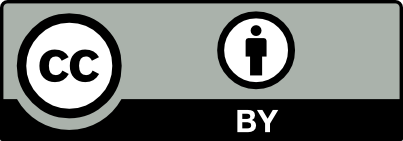Checking for non-preferred file/folder path names (may take a long time depending on the number of files/folders) ...
This resource contains some files/folders that have non-preferred characters in their name. Show non-conforming files/folders.
This resource contains content types with files that need to be updated to match with metadata changes. Show content type files that need updating.
Data and Code Release: Assessing the effectiveness of irrigator-driven groundwater conservation programs to drought: a case study of the northwestern Kansas Local Enhanced Management Areas
| Authors: |
|
|
|---|---|---|
| Owners: |
|
This resource does not have an owner who is an active HydroShare user. Contact CUAHSI (help@cuahsi.org) for information on this resource. |
| Type: | Resource | |
| Storage: | The size of this resource is 902.7 MB | |
| Created: | Aug 03, 2025 at 9:26 p.m. (UTC) | |
| Last updated: | Aug 14, 2025 at 7:21 p.m. (UTC) | |
| Citation: | See how to cite this resource |
| Sharing Status: | Public |
|---|---|
| Views: | 647 |
| Downloads: | 8 |
| +1 Votes: | Be the first one to this. |
| Comments: | No comments (yet) |
Abstract
This manuscript shares data and code used in the manuscript:
Ndlovu W, S Zipper, T Foster (2025). Assessing the effectiveness of irrigator-driven groundwater conservation programs to drought: a case study of the northwestern Kansas Local Enhanced Management Areas. Agricultural Water Management.
Please cite the manuscript if you use this data/code.
Manuscript abstract:
Groundwater pumping for irrigation has led to declining groundwater levels in agricultural areas around the world, including the U.S. High Plains Aquifer. Here, we used a process-based crop model, AquaCrop, to assess the effectiveness of different irrigation management strategies during a synthetic multi-year drought. We focused on the Groundwater Management District 4 Local Enhanced Management Area (GMD-4 LEMA), a regional groundwater conservation program in the northwestern Kansas portion of the High Plains Aquifer. We first calibrated corn and sorghum AquaCrop models to simulate yield and irrigation using the Particle Swarm Optimization algorithm, and then applied a novel difference-based bias correction method to improve performance. We found that the corn models outperformed the sorghum models, likely due to limited observational sorghum data. However, both models performed satisfactorily during drought periods. We then evaluated the effectiveness of the groundwater conservation program in reducing water use during a synthetic five-year drought under three irrigation strategies. During the synthetic drought, corn irrigation requirements were roughly double those of sorghum. However, even simulated corn irrigation needs were generally less than current water allocations, supporting past work that suggests the current GMD-4 LEMA water allocations are ineffective for conserving water. Model simulations also indicated that water conservation strategies could reduce annual irrigation requirements without a substantial reduction in crop yield through improved water use efficiency, suggesting that lower allocations would be a feasible approach to reduce irrigation and slow groundwater decline rates.
Subject Keywords
Coverage
Spatial
Temporal
| Start Date: | |
|---|---|
| End Date: |
Content
Credits
Funding Agencies
This resource was created using funding from the following sources:
| Agency Name | Award Title | Award Number |
|---|---|---|
| U.S. National Science Foundation | RISE-2108196 | |
| National Aeronautics and Space Administration | 80NSSC22K1276 | |
| United States Department of Agriculture | 2025-68012-44235 |
How to Cite
This resource is shared under the Creative Commons Attribution CC BY.
http://creativecommons.org/licenses/by/4.0/

Comments
There are currently no comments
New Comment